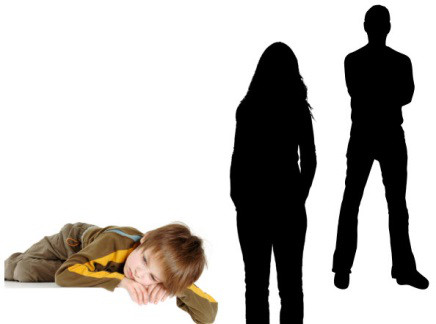Attachment is the tie of affection between two people. It begins with the bond between a mother and infant; a child will use this relationship as a basis of how their future relationships will be formed. Our earliest bonds leave a lasting mark on our lives.
Attachment disorder can develop when young children fail to form a normal bond or attachment with parents or caregivers. It usually occurs before a child is three years old and may permanently change a child’s growing brain, damaging their ability to establish future relationships.
Separation from the child’s primary caregiver is one of the causes of attachment disorder.
It is just one reason why ‘Supporting families at risk’1, a project supported by NDF, UNICEF and the Ministry of Social Politics of Republic of Serbia is so important.
The family outreach worker service, part of ‘Supporting families at risk’ is targeted at protecting the unity of families at risk and preventing the separation of children from their families.2
Attachment disorder
Many factors can contribute to a child developing attachment disorder, and as with many conditions it develops across a spectrum from mild to severe, when it is often referred to as reactive attachment disorder.
At the heart of attachment disorder is a feeling of abandonment by the child.
Contributory factors include:
- Separation from mother or primary caregiver
- Multiple moves or placements (foster care, failed adoptions)
- Changing daily carers
- Pre-birth exposure to trauma, drugs or alcohol
- Abuse (physical, emotional, sexual)
- Neglect (not answering the baby’s cries for help)
How a child with attachment disorder behaves
 A child with attachment disorder may display a range of symptoms including:
A child with attachment disorder may display a range of symptoms including:
- Lack of conscience
- Inability to think about cause and effect
- Food issues – gorges, refuses to eat, eats strange things, hides food
- Lying
- Stealing
- Being indiscriminately affectionate with strangers
- Lacking impulse controls
- Hyperactive behaviour
- Poor relationships with peers
- Poor hygiene (e.g. bed-wetting)
Because they typically do not learn to trust adults in their early life, children with attachment disorder do not allow people to be in control of them, which presents parenting issues.
They are also often manipulative – superficially charming and engaging outside the family and completely out of control when with their family.
Children with attachment disorder feel that they can’t rely on adults to keep them safe – a feeling developed during their early life. One way they believe they can stay safe if by keeping their distance from parents and adults, pushing them away emotionally and physically.
They also often feel unworthy and have negative self-belief.
Diagnosis and treatment
Because of the symptoms of attachment disorder, misdiagnosis can occur – the child can be diagnosed as suffering from ADHD for example.
Specialist attachment therapists will work with the child and family to develop the attachment between the child and parent or caregiver, after which the psychological, emotional, and behavioural issues can be addressed.
One form of treatment is Theraplay which uses activities that provide high levels of sensory stimulation. It is based on the interaction between infant and caregiver being ‘psychobiological in nature’3.
Normally children receive sensory feedback, i.e. touch, sight, sound and smell, from their primary caregiver during their early years. When this does not occur, they do not receive the environmental stimuli to develop emotional control. The basis of Theraplay is that it stimulates the right side of the brain using eye contact, touch, rhythmic movements with the primary caregiver.
The following video is from the Theraplay Institute4.
Preventing attachment disorder
It has been estimated that 1% of all children under age five may have attachment disorder5. In 2003 it was estimated that 800,000 children entering the welfare system in the US had attachment disorder5.
Prevention is almost always better than cure – and although attachment disorder certainly does not affect all children separated from parents, preventing that separation will help those who may develop the condition.
Here is an extract from the article on the Family Outreach workers project 2:
The service is based on the conviction that separation of a child from the family and his/her placement in residential or foster care is an experience quite stressful and painful, since it leads to severing the bonds with the people extremely close and significant to children.
Ms Katlin Brasic, UNICEF Serbia Child Protection Specialist, said:
Therefore, the principle is always to empower the natural family – whenever it is assessed that a family can be empowered by support, and when it is in the best interest of a child, said.
Supporting NDF means supporting projects like this, which change lives.
References
- 1 Supporting families at risk
- 2 Family Outreach Service
- 3 Buckwalter & Schneider, 2002:5
- 4 Theraplay Institute
- 5 Demographics of attachment disorder and http://voices.yahoo.com/review-rehabilitative-treatments-reactive-attachment-520613.html

















